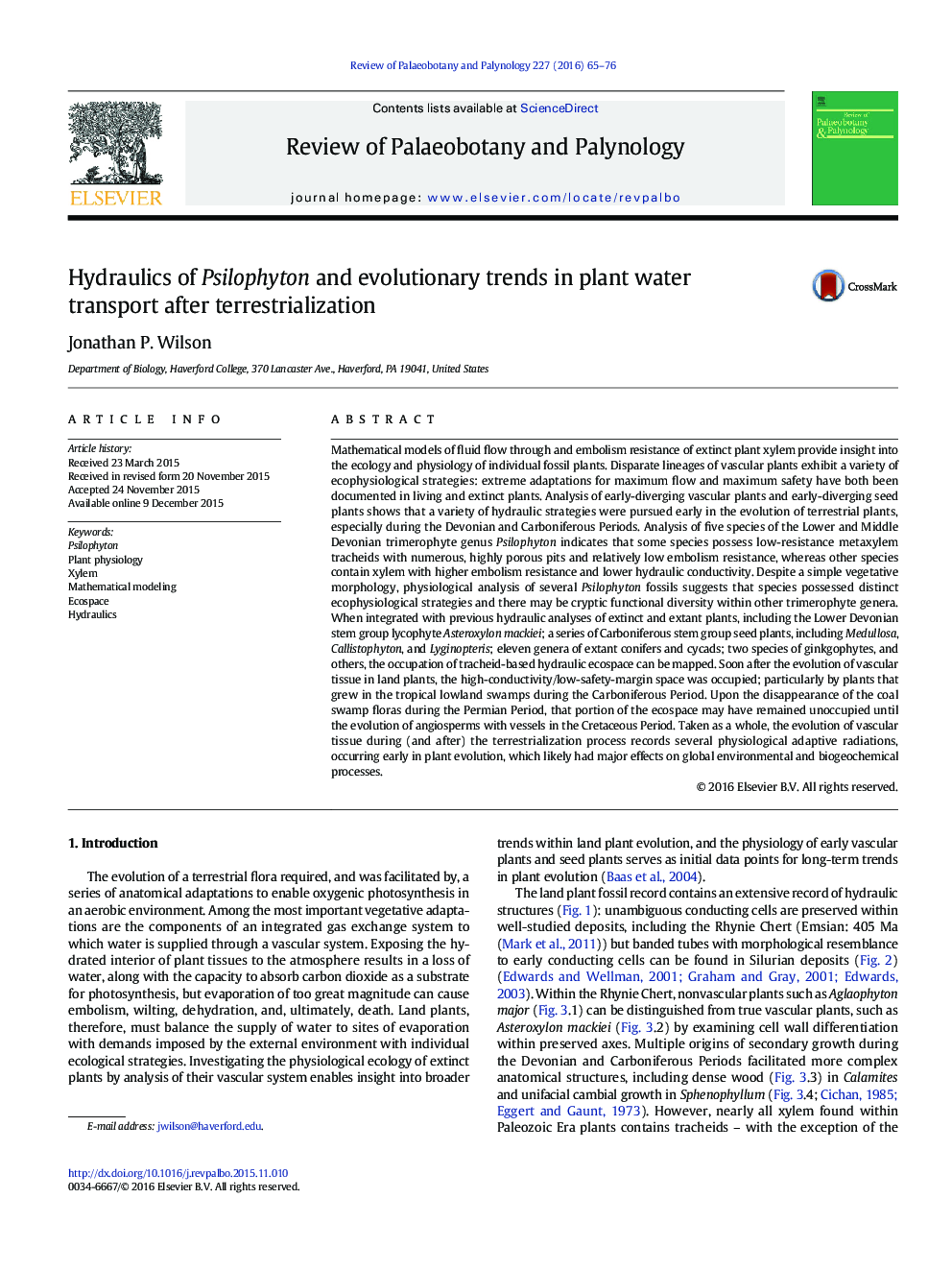| کد مقاله | کد نشریه | سال انتشار | مقاله انگلیسی | نسخه تمام متن |
|---|---|---|---|---|
| 4750120 | 1642470 | 2016 | 12 صفحه PDF | دانلود رایگان |

• Mathematical modeling of early vascular plants shows high conductivity evolved early.
• Psilophyton and other Devonian plants also had low safety margins.
• Efficient water transport evolved before laminar leaves.
Mathematical models of fluid flow through and embolism resistance of extinct plant xylem provide insight into the ecology and physiology of individual fossil plants. Disparate lineages of vascular plants exhibit a variety of ecophysiological strategies: extreme adaptations for maximum flow and maximum safety have both been documented in living and extinct plants. Analysis of early-diverging vascular plants and early-diverging seed plants shows that a variety of hydraulic strategies were pursued early in the evolution of terrestrial plants, especially during the Devonian and Carboniferous Periods. Analysis of five species of the Lower and Middle Devonian trimerophyte genus Psilophyton indicates that some species possess low-resistance metaxylem tracheids with numerous, highly porous pits and relatively low embolism resistance, whereas other species contain xylem with higher embolism resistance and lower hydraulic conductivity. Despite a simple vegetative morphology, physiological analysis of several Psilophyton fossils suggests that species possessed distinct ecophysiological strategies and there may be cryptic functional diversity within other trimerophyte genera. When integrated with previous hydraulic analyses of extinct and extant plants, including the Lower Devonian stem group lycophyte Asteroxylon mackiei; a series of Carboniferous stem group seed plants, including Medullosa, Callistophyton, and Lyginopteris; eleven genera of extant conifers and cycads; two species of ginkgophytes, and others, the occupation of tracheid-based hydraulic ecospace can be mapped. Soon after the evolution of vascular tissue in land plants, the high-conductivity/low-safety-margin space was occupied; particularly by plants that grew in the tropical lowland swamps during the Carboniferous Period. Upon the disappearance of the coal swamp floras during the Permian Period, that portion of the ecospace may have remained unoccupied until the evolution of angiosperms with vessels in the Cretaceous Period. Taken as a whole, the evolution of vascular tissue during (and after) the terrestrialization process records several physiological adaptive radiations, occurring early in plant evolution, which likely had major effects on global environmental and biogeochemical processes.
Journal: Review of Palaeobotany and Palynology - Volume 227, April 2016, Pages 65–76